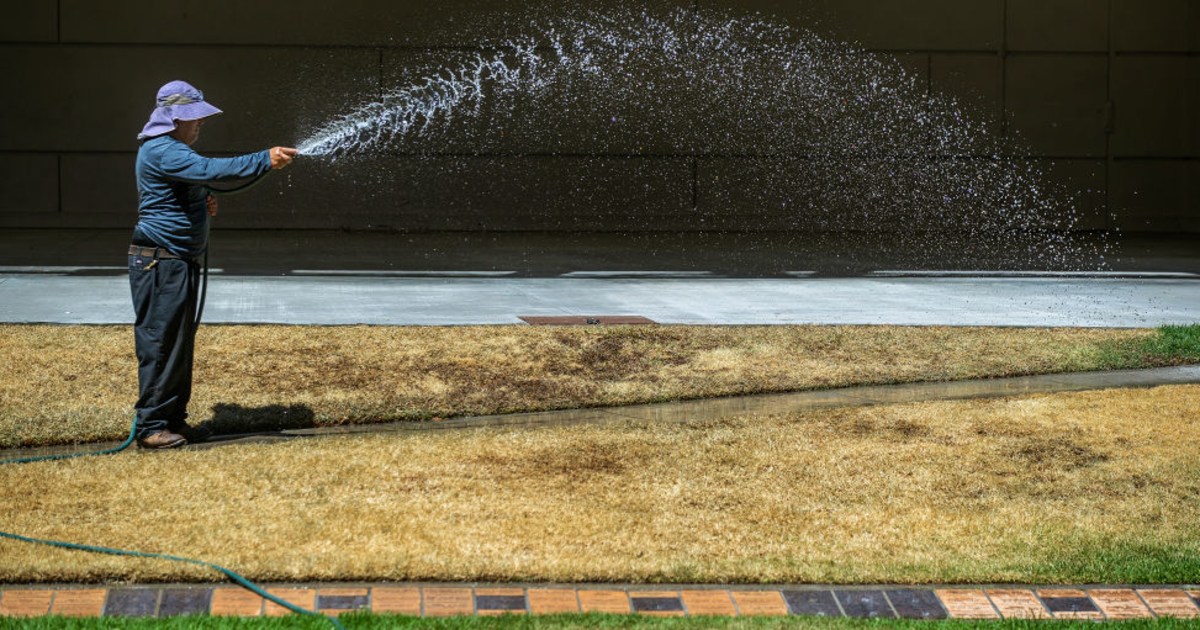The French are very very hot on Monday, while the heat wave hits a good part of the country.
So those who don't have the opportunity to get cool are often forced to run the fans at full speed.
Others opt instead for air conditioning, which consumes even more energy.
So many reflexes which are not without consequence on the production of electricity in France, largely carried on the national nuclear park.
A production that also suffers from climatic conditions.
And which have notably led the country's authorities to have to adapt by taking specific measures.
What is the effect of drought?
Dried up rivers… The French may have seen the images of the Gorges-du-Verdon in recent days, this treasure which was almost emptied of its waters this summer.
If the lack of water prevents holidaymakers from practicing their favorite sporting activities, the drying up of the soil is also not without consequence for the production of electricity in the country.
France can in theory rely on significant water resources to produce electricity.
The potential is great, in particular thanks to its mountain ranges.
In 2020, the hydroelectric sector accounted for nearly 49% of renewable production, and 13% of total electricity production in the country, according to figures made public by RTE (the manager of the electricity transmission network) in March last.
But the climatic conditions and the drought observed in recent weeks already seem to have an impact on hydroelectric production.
According to our colleagues from Le Monde, EDF's production fell by more than 33% over one year in June.
The progression of hydraulic filling stocks shows that the year 2022 is not the worst, but it has slowed down considerably in recent weeks.
The first signs, perhaps, of the effects of the drought.
What is the effect of heat?
It is not just the aridity of the soil that is a problem.
Heat, too, can pose a number of concerns.
This is the case, in particular, for cables carrying electricity in contact with the ground, in the case of prolonged sunshine.
“The junction points then suffer from this prolonged exposure to excessive heat and end up giving up”, explains to our colleagues from La Dépêche du midi Tony Marchand, director of regional affairs for Occitanie Enedis.
A phenomenon which can then create microcuts, most often without great gravity.
The problem is perhaps more important if we look at the French nuclear fleet.
Due to the early heat, EDF has already had to reduce the power of a reactor for a few hours in May at Blayais, then in June at Saint-Alban, on the banks of the Rhône.
What are the concrete risks?
In a note published on July 31, 2020, the Institute for Radiation Protection and Nuclear Safety identified several of them.
“A prolonged heat wave associated with a drought can lead to a period of low water (the rivers are then at a minimum level and their flow is lower), which leads to operating constraints, can we read.
High temperatures can also have consequences on the operation of ventilation, safety equipment, and more generally on the cooling capacities of the safety systems ensuring the removal of power from the reactor.
»
What solutions?
To guarantee the maintenance of nuclear electricity production, the State has decided in recent days to grant a temporary exemption from environmental rules.
Namely the Golfech (Tarn-et-Garonne), Blayais (Gironde) and Saint-Alban (Isère) power stations on Friday, to which was added the Bugey power station, in Ain, this Sunday.
This is to allow the power plants to maintain a minimum production power in these periods of high heat, and when 29 of the 56 French reactors are currently unavailable, for various reasons.
To understand these derogations, it is necessary to know that nuclear reactors and spent fuel storage pools must be permanently cooled.
To achieve this, nuclear power plants draw cold water from a nearby source.
Once used for cooling, these waters, which have become warmer, are then discharged downstream from the source.
This technique leads to a warming of the watercourse.
To protect the marine fauna and flora, the authorities have therefore set by regulation, and this for each nuclear power plant, a level of warming not to be exceeded.
The derogations granted in recent days aim to raise this level of water warming.
For example, “the reactors of the Bugey nuclear power plant discharging effluents into the Rhône may, during the fixed period (…), continue to discharge these discharges as long as the heating after mixing of the effluents into the Rhône ( …) does not exceed 3°C in average daily value”, specifies the decree published on Sunday.
This derogation device had so far only been used once, in 2018 for the Golfech plant, for 36 hours.
The derogation from the Bugey power plant is valid until July 24.









